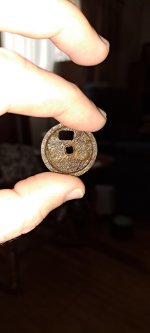MPH200
Sr. Member
- Oct 26, 2012
- 425
- 677
- Detector(s) used
- Minelab Explorer SE
- Primary Interest:
- Shipwrecks
My prayers go out to the friends & families.
Feds: Wreckage identified as ill-fated cargo ship El Faro
JACKSONVILLE, Fla. (AP) — Federal investigators have positively identified the wreckage found 15,000 feet deep in the sea as that of the ill-fated cargo ship El Faro.
The National Transportation Safety Board said Monday on Twitter that the survey of the area will continue.
The ship sank in about 15,000 feet of water Oct. 1 during Hurricane Joaquin with 33 people aboard east of the Bahamas. No survivors were found.
The NTSB says sonar indicates the ship landed upright, which could help crews recover the ship's data record, or "black box."
The agency says the U.S. Navy is continuing to survey the area around the wreckage.
Feds: Wreckage identified as ill-fated cargo ship El Faro
JACKSONVILLE, Fla. (AP) — Federal investigators have positively identified the wreckage found 15,000 feet deep in the sea as that of the ill-fated cargo ship El Faro.
The National Transportation Safety Board said Monday on Twitter that the survey of the area will continue.
The ship sank in about 15,000 feet of water Oct. 1 during Hurricane Joaquin with 33 people aboard east of the Bahamas. No survivors were found.
The NTSB says sonar indicates the ship landed upright, which could help crews recover the ship's data record, or "black box."
The agency says the U.S. Navy is continuing to survey the area around the wreckage.



